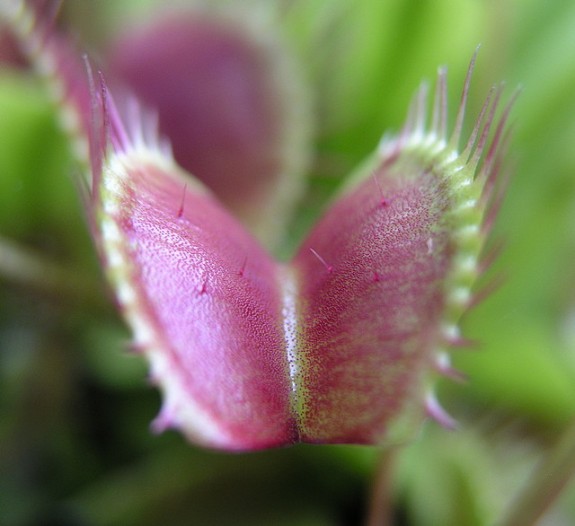Venus Fly Traps Glow Blue to Attract Their Prey
By emitting a faint blue glow, venus flytraps better attract their next meal

Photo: David Midgley
In carnivorous plants like the venus flytrap or pitcher plants—plants that get their nutrients not from the soil in which they grow but by consuming hapless insects—scientists have discovered an unusual property, says the BBC: some carnivorous plants can glow with a blue fluorescence, a ultraviolet sign to draw their prey’s attention.
Though many plants have evolved to attract bugs, for aid in pollination or protection, the survival of carnivorous plants, depends on their ability to attract the insects on which they feed. The BBC:
The blue glow was revealed on the inner sides of Venus flytraps when scanned at UV 366nm. And distinct blue fluorescence appeared on the lids, interior pitcher tubes and peristomes (upper rims) of pitcher plants.
After identifying that fluorescent emissions were coming from the traps of venus flytraps and other carnivorous plants, researchers tested to see if prey insects are actually attracted to the blue lights. They blocked the fluorescent regions, and waited.
The plants’ prey capture success reduced drastically over the 10-day period when their blue emissions were hidden.
This indicates that blue fluorescence acts as a “very significant signal” in attracting prey, Dr Baby explained.
More from Smithsonian.com:
The Venus Flytrap’s Lethal Allure
Ten Plants That Put Meat on Their Plates
/https://tf-cmsv2-smithsonianmag-media.s3.amazonaws.com/accounts/headshot/smartnews-colin-schultz-240.jpg)
/https://tf-cmsv2-smithsonianmag-media.s3.amazonaws.com/accounts/headshot/smartnews-colin-schultz-240.jpg)